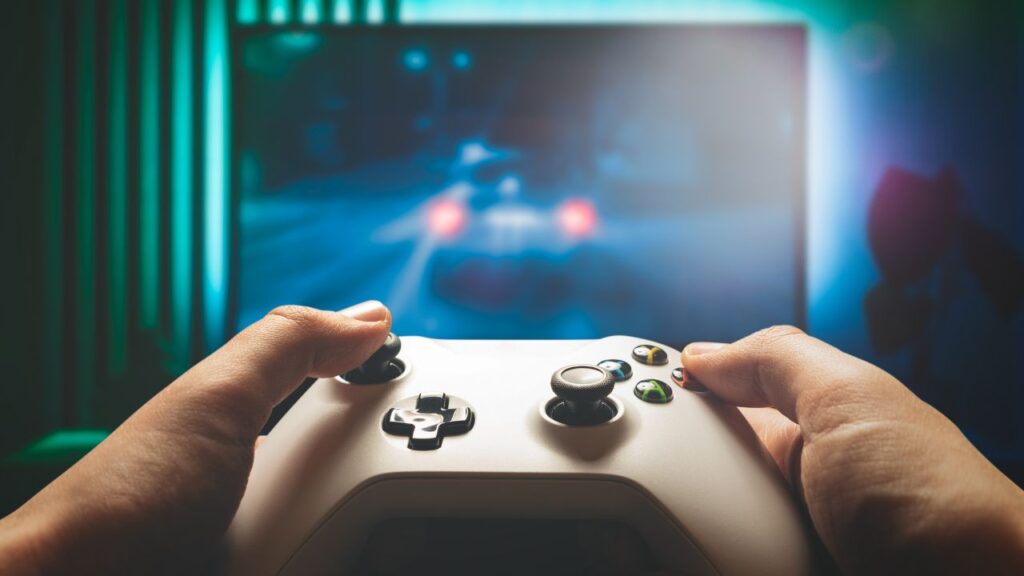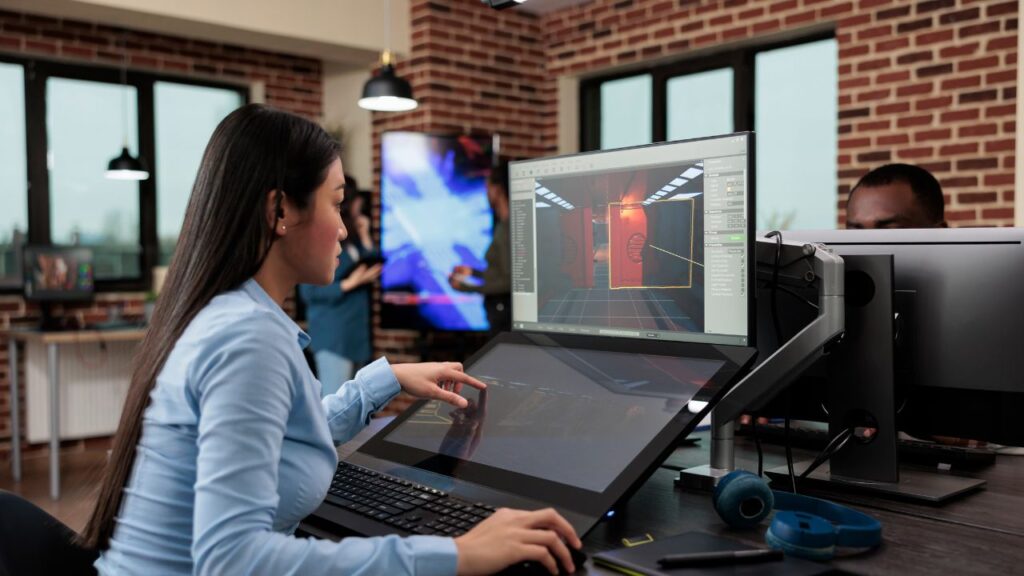When players jump off a building in a video game, they expect to fall down, not float up into the sky. This basic expectation shows how important physics is in creating games that feel real and fun to play.
Game physics refers to the computer code that makes objects in video games behave like they would in the real world, controlling how characters move, objects fall, and collisions happen. Without physics, games would feel strange and broken. A basketball might pass through the ground, or a car might drive upside down through the air.
Modern games use physics engines to create worlds that feel believable. These systems handle everything from simple gravity to complex interactions between multiple objects. Players can now experience realistic car crashes, watch buildings collapse properly, and see water flow naturally. Understanding how physics works in games helps explain why some games feel more immersive than others and reveals the clever tricks developers use to make virtual worlds come alive.
What Are the Core Principles of Physics in Video Games?
Game physics engines create realistic movement and interactions by simulating real world forces like gravity and friction. These systems balance accurate physics with smooth gameplay through smart shortcuts and detect when objects collide to create believable responses.
How Do Game Physics Engines Work?
Physics engines are the software systems that make virtual objects move and interact like real things. They run complex math calculations many times per second to figure out where everything should be.
The engine tracks each object’s position, speed, and direction. It applies forces like gravity to pull characters down or friction to slow them when they slide across surfaces.
Most engines use something called a physics loop. This loop repeats about 60 times every second. Each time it runs, the engine checks all objects and updates their positions based on the forces acting on them.
Popular physics engines include Havok, Unity’s built-in system, and Unreal Engine’s Chaos Physics. These tools let game developers add realistic movement without writing all the complex math themselves.
The engine also handles rigid body dynamics. This means it treats objects like solid pieces that can’t bend or break unless the developer specifically programs that behavior.
Why Choose Simulation Over Perfect Realism?
Game physics don’t copy real world physics exactly. Instead, they create a simulation that feels right to players while running smoothly on computers.
Real physics would require too much computer power and might not be fun to play. For example, a perfectly realistic jump in a platformer game would be much shorter and less exciting than what players expect.
Developers make smart choices about what to simulate accurately. Gravity usually works like the real world because players understand it. But other forces might be exaggerated or simplified.
Games also use approximations to save computing power. Instead of calculating every tiny detail, they use shortcuts that look good enough. This lets the game run at 60 frames per second without slowing down.
The goal is to create believable interactions that support the gameplay. Players should feel like the virtual world makes sense, even if it doesn’t follow every real physics rule perfectly.
How Does Collision Detection and Response Work?
Collision detection figures out when two objects touch each other in the game world. This happens constantly as players move around, jump on platforms, or hit enemies with weapons.
The system uses invisible shapes called colliders around each object. These shapes are usually simpler than the actual 3D model. A character might have a capsule shaped collider instead of matching their exact body shape.
When two colliders overlap, the engine triggers a collision response. This might make a ball bounce off a wall, stop a player from walking through a door, or cause damage when a bullet hits a target.
There are different types of collision detection:
- Discrete detection checks for overlaps at specific moments
- Continuous detection tracks movement between frames to catch fast moving objects
- Trigger detection notices when objects enter special areas without stopping movement
The response system decides what happens next. It might push objects apart, change their speed and direction, play sound effects, or trigger game events like opening a treasure chest.
What Creative Physics Uses Make Games More Exciting?
Game physics creates amazing experiences but also brings tough challenges that developers must solve. Players see incredible examples in popular games while new technology shapes what comes next.
What Limits Do Virtual Worlds Face?
Physics engines cannot copy real world physics perfectly. Processing power sets the biggest limit for game developers. Complex calculations slow down games and cause frame rate drops.
Most games use simplified physics models instead of real physics. Objects might not break exactly like they would in real life. Water physics often look basic compared to actual water movement.
Memory usage creates another big problem. Storing data for every physics object takes up lots of computer memory. Developers must pick which objects need full physics and which can use fake effects.
Network lag makes multiplayer physics very hard. When players see different physics results, games become unfair or confusing. This forces developers to limit physics complexity in online games.
Which Popular Games Show Amazing Physics?
Portal changed how players think about physics puzzles. The game uses momentum and gravity in creative ways. Players must understand real physics concepts to solve each level.
Half-Life 2 introduced the Gravity Gun which lets players grab and throw objects. This tool makes physics part of combat and puzzle solving. Players can stack boxes, throw barrels, or build bridges.
Angry Birds made physics fun for mobile players. The game uses simple trajectory physics that anyone can understand. Players learn through trial and error how to aim their shots.
Kerbal Space Program teaches real rocket science through gameplay. Players must understand orbital mechanics and fuel efficiency. The game uses actual physics equations for space flight.
What New Physics Trends Are Coming?
Machine learning will make physics more realistic and faster. AI can predict physics results without doing all the math. This could bring better physics to more games.
Cloud computing might handle complex physics calculations remotely. Players could experience amazing physics without powerful computers. This technology needs better internet connections to work well.
Procedural physics will create unique interactions every time. Instead of pre-programmed physics, games will generate new physics behaviors. This makes each playthrough feel different.
Haptic feedback will let players feel physics through controllers. Advanced controllers can simulate texture, weight, and resistance. This makes physics interactions feel more real.



